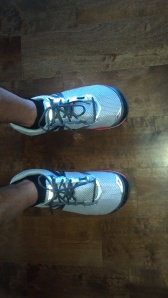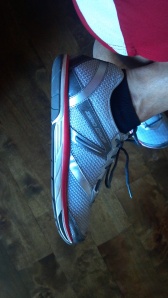I finished this book over the weekend. Very interesting. I must say I was pleasantly surprised at the degree to which it incorporated exercise physiology into the subject – in fact I found myself saying: “when do we eat?” That’s a bit of an exaggeration. There’s a summary of the diet at the beginning, followed by several chapters on what to eat before, during, and after exercise. All this is broken into 5 stages. The next few sections back up the nutrition, fitness, and performance claims of the authors with their review of applicable research. The final section contains lists of EAT and DON’T EAT (my terms) followed by dozens of recipes.
I wasn’t previously familiar with the Paleo Diet other than thinking “that’s the one where you eat nothing but meat, right?” This is a diet in the true sense of the word, not the vernacular we’ve all grown up with. It’s a way of eating for life, not a 6 week program to drop x number of pounds.
I’ve decided to experiment with this. I had recently decided to put myself on a reduced gluten diet (I hesitate to say gluten free) and this diet is a natural extension of that – although there are many more off-limits foods than a GF diet. I would sum it up with this quote: “the Paleo Diet [is] …unrestricted consumption of fresh meats, poultry, seafood, fruits, and vegetables. Foods that are not part [of it] include cereal grains, dairy products, high-glycemic frutis and vegetables, legumes, alcohol, salty foods, processed meats, refined sugars, and nearly all processed foods.” There are exceptions. For instance, the authors recognize that simple carbs in the form of sugars can be a necessary fuel in certain stages before, during, and after endurance exercise.
One of the more intriguing parts of the book is how the diet has the potential to teach your body to burn more fat and dip into your glycogen reserves less until it’s absolutely necessary. I’m interested in anything that can avoid the wall – more of a marathon problem than a half marathon problem. The book does have a specific section on what to take in during various time periods of exercise – including what for most of us mortals would include the half marathon distance.
I’m not trying this to lose weight. My goals are increased performance and health benefits. The book makes a good case for both of these. I’ll let you know how it goes. I will say that it’s been hardest to cut out/down dairy and refined sugars. Especially when they are combined into ice cream. However I am encouraged by mention of the 85% rule – follow the diet 85% of the time. That might be doable.
To balance this perspective I’m also planning on picking up Scott Jurek’s “Eat and Run” 100% plant based diet at some point. I confess some natural skepticism of the vegan diet’s ability to give the body everything it needs, although Scott has certainly earned his credibility to speak on that issue (Badwater, Western States to name a few).




